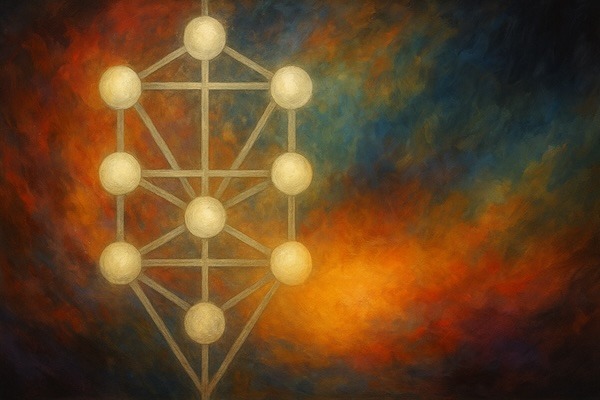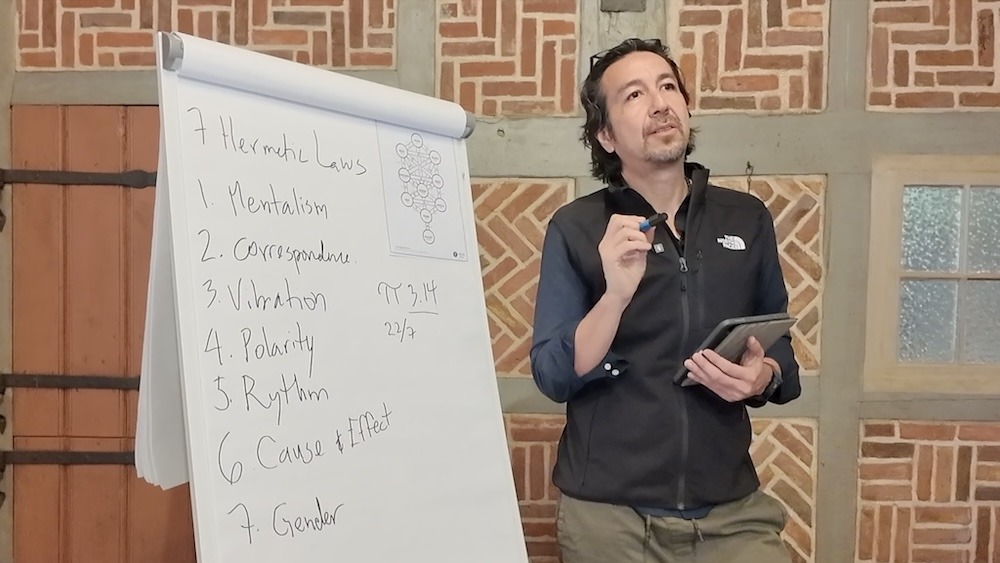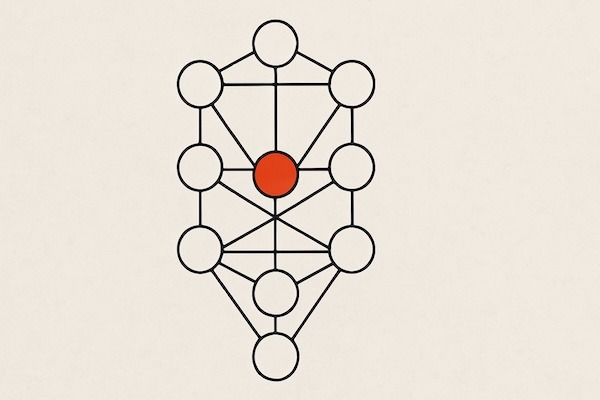In the vast and intricate wisdom of the Kabbalistic Tree of Life, each sefirá represents a unique spiritual force, a psychological archetype, and a dimension of human experience. Among them, Netzach stands out as the emotional, expressive, and relational dimension—the soul’s impulse to feel, to move, to create, and to connect.
To understand Netzach is to understand the depth of human emotion, the desire for beauty and intimacy, and the will to endure in the face of resistance. Netzach is not passive feeling; it is feeling-in-motion. It is the emotional fire that fuels our relationships, our art, and our deepest longing to touch the eternal through the finite.
Netzach in the Tree of Life: The Gateway of Emotion
Positioned on the right side of the Tree, Netzach mirrors Chesed above and balances with Hod on the left. Where Hod represents mental clarity, logic, and analysis, Netzach embodies emotion, intuition, passion, and impulse. It is the source of:
- Love and longing
- Artistic and poetic expression
- Desire for connection and meaning
- Sensuality and creativity
- Persistence and resilience
Netzach is not theoretical. It moves us. It calls us into relationship—with others, with beauty, with the mystery of life.
Emotion as a Path to Transcendence
Unlike cultures or philosophies that view emotion as something to transcend, Kabbalah honors emotion as a vehicle for divine connection. In Netzach, emotion is not a distraction—it is a portal to the sacred.
Joy, sorrow, desire, awe, eroticism, inspiration—when fully felt and consciously held—can reveal dimensions of truth beyond language.
In this way, Netzach teaches that feeling is a form of knowing, and that our emotional life is not opposed to spirituality, but essential to it.
The Artist and the Lover: Netzach’s Archetypes
Netzach finds its archetypal expression in two primary figures:
The Artist
This is the one who feels deeply and must externalize that feeling—through dance, color, sound, poetry, or presence. The artist is not motivated by logic but by inner necessity. The art is not decoration—it is a revelation of the soul.
The Lover
This figure seeks union through touch, gaze, emotion, and intimacy. The Lover is not merely romantic—they are devoted to dissolving separation, to reaching the beloved (or the divine) through the heart.
These archetypes are not separate. The artist is a lover of truth, and the lover is an artist of connection.
When Netzach is Out of Balance
Like all sefirot, Netzach can become dysfunctional when disconnected from the rest of the Tree—especially from Tiferet (the heart center), Hod (discernment), and Yesod (integration).
Imbalanced Netzach may show up as:
- Emotional impulsivity: reactivity without reflection
- Addiction to pleasure: mistaking temporary sensation for lasting fulfillment
- Narcissism or vanity: seeking validation through image or performance
- Emotional repression: fear of vulnerability or shame around feeling
- Creative inhibition: the blocked artist, silenced singer, or hidden dancer
In these states, the emotional self either dominates or disappears. The key is to bring emotional truth into harmony with structure, meaning, and grounding.
Netzach and Psychological Insight
From a psychological lens, Netzach corresponds to:
- Emotionally driven behavior (affect and motivation)
- Attachment and intimacy patterns
- Sensory and aesthetic intelligence
- Somatic intelligence (body-based feelings and instincts)
- Creative self-expression and play
It can be related to Jung’s Eros principle (the force of relationship), as well as to the inner child who feels first and asks questions later.
In therapy, working with Netzach involves inviting emotion back into the room—as sacred, as wisdom, and as a force for integration.
Cultivating Netzach in Daily Life
To work with Netzach is to reconnect with your aliveness. Here are practices to awaken its healthy expression:
- Art as Ritual: paint, dance, or write without editing yourself. Let the emotion move through you
- Emotional Inquiry: ask not “Why do I feel this?” but “What is this feeling revealing?”
- Sensory Presence: eat slowly, feel the warmth of water, listen deeply to music
- Loving Contact: allow yourself to be seen, touched, and moved by another
- Endurance with Meaning: reconnect with a project or purpose that lights you up, and stay committed
Netzach’s Wisdom: Eternity Through the Feeling Heart
One of the most beautiful teachings of Kabbalah is that Netzach is also Eternity (netzach in Hebrew means both “victory” and “eternity”). What does this mean emotionally?
It means that when you love sincerely, when you cry from the soul, when you offer your art or your voice without masks—you touch eternity.
Not because it lasts forever in time, but because it connects to something beyond time.
Netzach whispers:
“The eternal is not after life—it is in the depth of this moment,
when you dare to feel it fully.”
Final Reflection
In a world that encourages control, rationality, and perfection, Netzach invites us back to emotion, imperfection, and vulnerability. Not as weakness, but as truth. Not as chaos, but as the raw material of transformation.
To embrace Netzach is to reclaim your right to feel deeply, love wildly, create boldly—and in doing so, to remember that the divine lives in the pulse of the heart.







